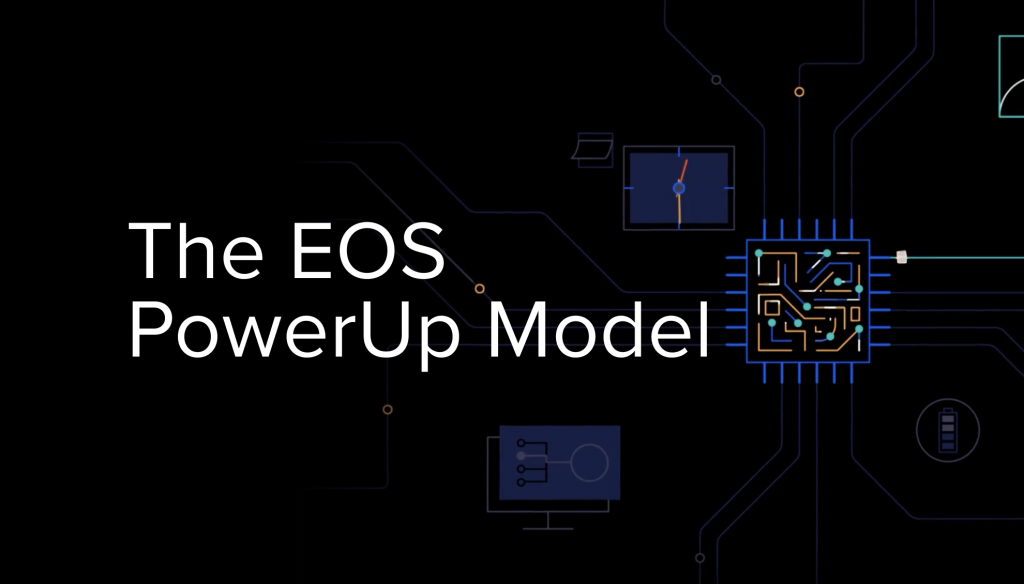Gimly’s Decentralized Identity Framework Is Built for Portability and Security
Gimly built a decentralized identify framework on EOSIO that offers users portability, security, and ease.

How public blockchains allocate and manage on-chain resources is extremely important. Some networks operate on the basis of transaction fees, where prices go up as more people try to transact. Those fees are collected by miners. The EOS Public Blockchain has a different model that involves locking up EOS tokens to reserve resources. On the EOS Public Blockchain, there are three resources that matter: CPU bandwidth (CPU), which is the amount of time it takes to process a transaction, network bandwidth (NET), which is the size of a transaction measured in bytes, and RAM, which is the method for storing data on-chain measured in bytes. We’re going to talk about CPU and NET and how we propose to evolve them moving forward.
Currently, EOS tokens are referred to as owning digital real estate. Owning a percentage of all EOS is likened to controlling a percentage of the total resources on-chain. When a user locks up their tokens, they reserve a percentage of the total available resources. The amount of CPU and NET each user receives was proportional to the amount of tokens they had locked up. If you have 1% of tokens, you have 1% of resources.
We’re proposing the next evolution to this model.
Since Fall 2020, Block.one has engaged with the rest of the EOSIO developer community to evaluate a newly proposed model for how the EOS Public Blockchain allocates CPU and NET resources. We call this the EOS PowerUp Model and believe it provides greater freedom and efficiency for the EOS Public Blockchain. We provided a bug bounty program and Block Producer voting program to incentivize engagement with the code. At the time of writing, over 250 individuals have joined in the conversation on Telegram and over 40 Block Producer candidates have provided feedback, all of which has been positive. Of the bug bounty submissions, none identified any vulnerabilities.
We’d like to acknowledge the entire community who participated in the discussions that resulted in the proposed EOS PowerUp Model window being shortened from 30 days to 24 hours. We also acknowledge EOS Authority for a suggestion that resulted in a code change.
The EOS community has done an excellent job at breaking down how this new model works. EOS Vibes, an EOS Block Producer candidate, explains it like this:
The EOS PowerUp Model presents the user with two choices:
Imagine if token-holders on proof-of-work networks were the recipients of fees generated by transactional activity on-chain, instead of miners. That’s essentially what’s happening here. Depending on your usage level and the total amount of tokens deposited, the fees you collect may offset the fees you pay to power up your account. And all of this happens within the context of ensuring greater availability of system resources.
A shared vision within the EOS Public Blockchain ecosystem is that EOSIO is robust enough of a development platform to support seamless user experiences. This vision imagines that on-chain resource management is abstracted away from the end-user to the point where their experience is indistinguishable from a typical application. We believe that vision can be achieved through resource providers, which we view as middleware that dynamically and efficiently meets the resource needs of users. This middleware can be offered by a third party or by the end-user applications. However, the way the EOS PowerUp Model fees are handled is up to the providers and the applications. We encourage EOS community members to help spur development of open-source SDKs that enable easy resource provider integration within end user experiences. Please reach out to us if you are working on such a solution.
We believe that the EOS PowerUp Model alleviates many resource challenges on the EOS Public Blockchain and seeks to increase alignment between token holders and usage of the EOS Public Blockchain.
It is our expectation that, similar to the EOSIO 1.8 consensus upgrade that occurred in Q3 and Q4 of 2019, leadership from within the rest of the EOS community will emerge to lead the development, deployment, and adoption of the EOS PowerUp Model. We look forward to participating as a member of the EOS community.
For the technical explanation of the proposed EOS PowerUp model, please read the EOSIO Resource Allocation Proposal.
Important Note: All material is provided subject to this important notice and you must familiarize yourself with its terms. The notice contains important information, limitations and restrictions relating to our software, publications, trademarks, third-party resources and forward-looking statements. By accessing any of our material, you accept and agree to the terms of the notice.
Important: All material is provided subject to this important notice and you must familiarize yourself with its terms. The notice contains important information, limitations and restrictions, relating to our software, publications, trademarks, third-party resources and forward-looking statements. By accessing any of our material, you accept and agree to the terms of the notice.